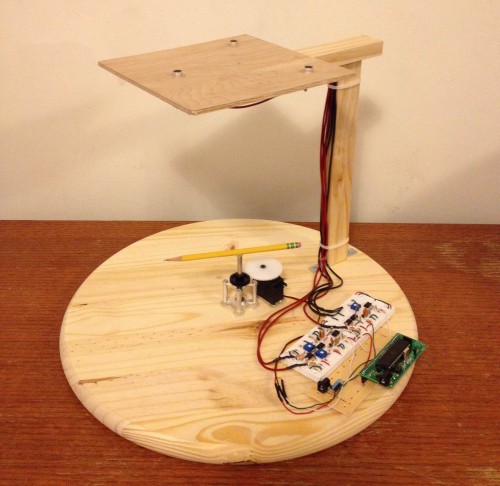This Acoustic Impulse Marker project by Adam Wrobel and Michael Grisanti of Cornell University uses 3 microphones to listen for sharp sounds, when a sound is detected the arrival time of the sound to each of the 3 microphones is used to determine where the sound came from. The project uses a ATmega 1284p microcontroller to process the microphone input but analog stages are used to convert a fast rising edge noise into a digital input for the microcontroller to work with easier.
“The core of our system is hardware based analog circuit, which filters, amplifies, and processes the sounds obtained from the microphones. By utilizing hardware for this, we are able to high frequency signal processing without taxing the microcontroller. Also, we remove the need to use the relatively slow ADC of the microcontroller by processing all the analog signals in hardware and converting them to binary digital pulses. However, the main tradeoff here is that the analog hardware limited our accuracy in a way that is very difficult to measure. Every stage of the circuit has real world inefficiencies and tolerances, which could accumulate in minute error. No matter how fast or thorough our software system is, it can only work with the values received from the analog hardware.”

